
Once upon a time, a junkman had a dream…
“I want to build a spaceship, go to the moon, salvage all the junk that’s up there, bring it back, and sell it”
So he put together a team. An ex-astronaut…a fuel expert…they built a rocket ship…and they went to the moon.
Who knows what they’ll do next?
In the tumult of the late 1970’s, when double-digit inflation gripped the nation and US hostages languished in Tehran, Americans were able to fondly recall their nation’s stunning victories in the space race, and revel in the still-fresh memories of the highly successful Apollo program. It was during this time that a former Navy electronics technician turned industrial training film producer named Michael Lloyd Ross caught a newspaper article about the millions of dollars of space hardware that had been left behind on the moon’s surface.
Inspired, Ross formed an idea for a feature film that would detail the efforts of a team of ordinary Americans who would build their own spaceship from scratch, and fly to the moon to salvage the equipment NASA had left behind. Ross pitched his idea to producers Harve Bennett (who would go on to make a name for himself as the producer of the most successful Star Trek movies) and Harris Katleman. While Bennett and Katleman were enamored of the idea, they convinced Harris that such a story was better fitted to the small screen. Thus, Ross teamed with writers Bert Swanson and Ruel Fischman to pen the script for Salvage, a two-hour made for television movie/pilot that premiered on ABC television at 8:00 pm on Saturday, 20 January 1979.
Venerable television star Andy Griffith was cast in the lead role of Harry Broderick, owner of Jettison Scrap and Salvage, the “junkman who had a dream.” To aid him in his efforts, a fresh-faced actor named Joel Higgins (Best of the West, Silver Spoons) was cast as a brilliant former NASA astronaut-turned-used-car salesman named Addison “Skip” Carmichael, who’s unconventional “Trans-Linear Vector Principle” theory would serve as the basis for Harry’s unconventional mission. Rounding out the lead cast was actress Trish Stewart (The Young and the Restless) as Melanie Slozar, a former NASA explosives expert who would ultimately create the extremely powerful but highly volatile “mono-hydrazine” based rocket fuel that would transform the Trans-Linear Vector Principle from theory into reality.
 |  |  |
 | 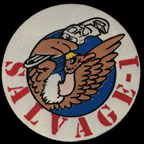 |  |
J. Jay Saunders and Raleigh Bond led the supporting cast as Mack and Fred, respectively, two former NASA engineers who came to work for Harry at Jettison Salvage after being laid off by the space agency, while Richard Jaeckel (The Dirty Dozen, Starman) portrayed FBI Special Agent Jack Klinger. Initially the Salvage team’s adversary, Jaeckel’s character became a reluctant supporter of the Salvage mission by the end of the pilot, and tenuous ally in the ensuing series. Finally, Jacqueline Scott (The Bold and the Beautiful) was cast as Harry’s ex-wife, Lorene, who oversaw the business operations at Jettison Salvage.
The script for the Salvage telemovie benefited not only from Ross’s own extensive electronics background, but also from the services of SciFi writer Issac Asimov, who was making something of a second career out of serving as “Scientific Advisor” on any number of science fiction television programs, including the original Star Trek. Together, Ross and Asimov ensured that the Salvage 1 team’s plan for getting to the moon and back, and the design of their spacecraft, “The Vulture,” weren’t too “out of this world.”
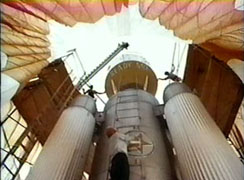 | 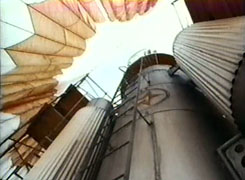 |
The optimism and entrepreneurial victory embodied by Salvage captured the imagination of a downtrodden nation burdened with escalating oil prices and skyrocketing mortgage rates. The telemovie was a ratings smash for ABC, which immediately ordered 12 episodes of a Salvage 1 series as a mid-season replacement to be aired on Monday nights at 8:00 pm during the 1978-79 television season. Raleigh Bond’s “Fred” was the only principal character that didn’t survive the transition from telemovie to series. Failing to acknowledge the lessons learned from Battlestar Galactica, however, ABC rushed the new series into production, leaving little time for the development of quality scripts. The first of the new episodes, “Dark Island,” premiered on Monday, 29 January 1979. Salvage 1 ended its first season on 28 May 1979, with an episode titled “Confederate Gold,” which is largely regarded by fans and critics alike as the weakest episode of the entire series.
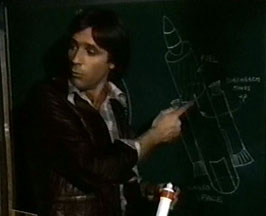
Salvage 1 the series was met by the American viewing public with much less enthusiasm than was Salvage, the made-for-TV movie. As columnist Robert Mackenzie wrote in the 24 March 1979 issue of TV Guide: “Once you have been to the moon, some astronauts say, everything afterward is a letdown. That should have provided a clue to the makers of this ABC adventure series.”
But it wasn’t only the audience who was feeling let down by the quality of Salvage 1, the sentiment was shared by the actors who, frustrated by the rush of production, did everything in their limited power to improve some of the stories while fleshing out their characters. “It’s not that we get bad scripts,” said Stewart in a 1980 Starlog interview, “it’s just that everything has been so rushed all season. We did the pilot, and then a week later got the go-ahead for the show. They just didn’t have time to get those scripts together. They’re still working on the scripts while we’re shooting it.”
Salvage 1 ultimately drew lackluster ratings, and by the end of the first season ABC had not announced its renewal for the 1979-80 television season. The network did, however, order 13 new episodes to be aired as a mid-season replacement for the first ABC series to fall under the cancellation axe. ABC ordered the addition of a new child character, Michelle (Heather McAdam), and directed that the scripts be written to accommodate a move to the 7:00 pm Sunday time slot, a time slot which was largely geared toward children at the time, and which carried a stifling prerequisite for educational content (ironically, this is the time-slot that was eventually foisted upon the ill-fated Galactica 1980, and which served as that show’s death-knell).
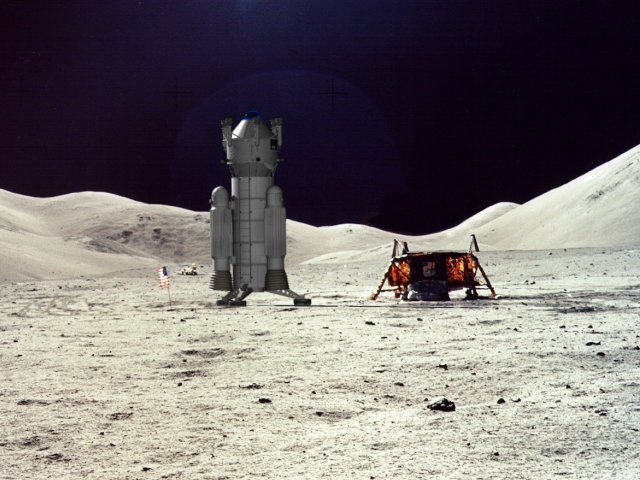
Production on the second season was to have started in the Summer of 1979, but, again to their frustration, the actors and crew were kept waiting until shooting finally resumed in the Fall. When shooting did begin, the actors were crestfallen to discover that, rather than improving, the quality of the scripts had actually declined. With only 7 hours of the 13-episode order in the can, ABC abruptly halted production. The future of Salvage 1 was once again uncertain.
At the end of the Salvage telemovie, a City Councilman who wanted to send the Salvage 1 team to the North Pole in order to bring back an iceberg, thereby staving off the threat of drought, approached Harry. Interestingly enough, this plotline was never revisited during the first season of the show, but did serve as the basis for “Hard Water,” the two-part episode what was to have been the second season premiere of Salvage 1. “Hard Water” part one aired at 7:00 pm on Sunday, 4 November 1979, part two aired a week later.
No new episodes followed.
On 21 December, 1979, with four unaired episodes of the shelf, ABC lowered the boom. Salvage 1 was officially cancelled. The remaining four episodes were never broadcast on ABC, but were seen in the UK.

Trish Stewart faded from the acting scene shortly after the demise of Salvage 1, while Joel Higgins went on to star in another short-lived ABC program, a 1981-82 post-Civil War sitcom called Best of the West. Higgins portrayed Sam Best, a former Union soldier appointed Marshall of a small town on the western frontier. A highlight of Best of the West was a guest appearance by former Salvage 1 co-star Andy Griffith as Higgins’s Confederate father-in-law. After the cancellation of Best, Higgins found success on the NBC sitcom Silver Spoons, which also starred Buck Rogers alum Erin Grey. Spoons ran from 1982 to 1987, after which Higgins, like Stewart, faded into obscurity. Griffith continued to enjoy a busy career well into the 1990’s, reprising his best-known role as Sheriff Andy Taylor in 1986’s Return to Mayberry. Griffith went on to star in the highly successful Matlock television series, first on NBC (1986-1992) then on ABC (1992-1995). His last appearance was in the 2001 Billy Bob Thornton film Daddy and Them.
Written by Commander Taggart